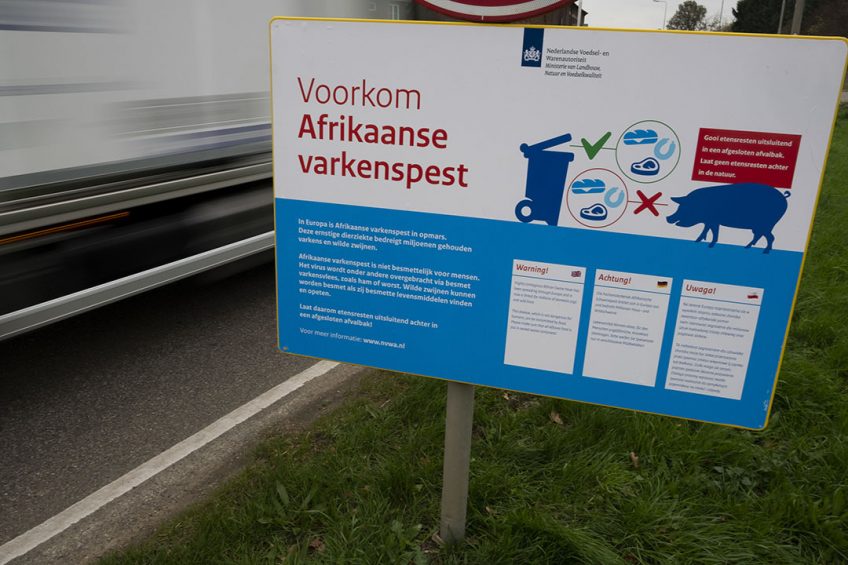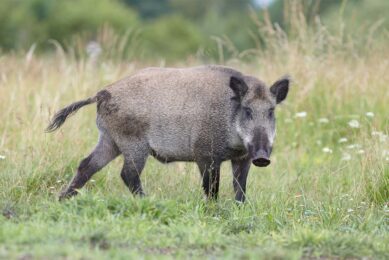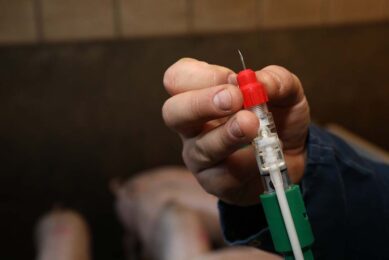ASF in the EU: The human factor makes the difference

African Swine Fever was in the spotlight at the recently held European Symposium for Porcine Health Management (ESPHM). As this May’s event took place in the Netherlands, the situation in Belgium received plenty of attention. Pig Progress editor Vincent ter Beek noticed once more that the human factor is arguably the most essential factor determining failure or success.
The pig world is on fire with African Swine Fever affecting many countries in Eastern Europe and Eastern Asia. Especially in countries where biosecurity or information levels are relatively low, the virus manages to travel fast and ravage domestic swine herds. Nevertheless, quite a lot of attention was paid to Belgium – a country where African Swine Fever (ASF) virus has been occurring in the wild boar population only since September 2018.
Role of the human factor in spread of ASF
It’s often the human factor that can make or break ASF in a country. In mid-June, the virus took 821 victims in Belgium’s wild boar population, according to figures supplied by the World Organization for Animal Health. In recent weeks only a few contaminated carcasses are found every week. In addition, so far, Belgium has managed to keep the virus out of its domestic pig population. All in all, Belgium’s approach appears to be moderately successful so far.
At the ESPHM, held in Utrecht, the Netherlands, 22-24 May 2019, Dr Philippe Houdart of the Belgian Federal Agency for the Safety of the Food Chain (FASFC) gave some detailed insights into the situation in Belgium’s southern province Luxembourg. He explained that it requires coordination to take a proper ASF approach on various authority levels. In Belgium, responsibility for wild boar management lies at regional level, whereas the federal FASFC is responsible for health issues in pigs. On top of that, a network between all stakeholders needed to be made.
How did the virus get into Belgium?
Dr Houdart discussed various options as to how the virus might have got into Belgium – all of them related to human (mis)behaviour, like virus on left-overs or equipment, through a military facility, through the introduction of infected wild boar and, interestingly, he also mentioned intentional introduction.
He discussed that over 5,000 blood samples of domestic pigs from about 1,000 holdings had been analysed. No outbreak so far has been confirmed in domestic pigs in Belgium – hence Belgium does have the status ‘Free from ASF’ in domestic pigs, meaning that there are no (trade) restrictions for the rest of the country.
What to do to get ASF virus out?
Dr Houdart also touched on the containment strategy – for the short term that comes down to preventing the virus from spreading further, e.g. by zoning, preventive measures, fencing, risk adapted hunting tactics and collection of dead wild boar. On the longer term, that means eradication of the disease as well as eradication of wild boar in the affected area and a significant reduction of wild boar elsewhere. The authorities started that process in early June. This process, Dr Houdart explained, is necessary to reduce the potential of new hosts for the ASF virus.
Dr Houdart then discussed what measures were taken to make sure ASF would continue to stay away from domestic pigs, like e.g. a mandatory 1-on-1 movement of pigs (so no picking up of other animals on the road) and enhanced passive surveillance.

Many of these measures look like those taken in the Czech Republic, where also an isolated wild boar herd was found infected in 2017. The country managed to restrict the outbreaks to 223 wild boar and no domestic pigs were infected. In April this year, the Czech Republic was announced to be free from ASF again.
Expanding ASF infected zones
Dr Houdart mentioned that the affected zones had been expanded ever since the first outbreaks. Every time when that happened, new farms had to be checked. In case biosecurity turned out not to be top notch, euthanasia of pigs was compulsory.
Dr Houdart also touched on fencing in the areas affected by ASF. They served a triple purpose, he said, being:
• To avoid the spread of disease by keeping the wild boar fenced in;
• To facilitate hunting; and
• To avoid repopulation.
He explained that simple metallic fencing was used, of which over 100 km was put into place. This was locally reinforced by repellents. He did mention, however, one challenge to this type of approach is that there are motorways or villages causing fragmentation of the fencing.
The EU view on managing ASF
With outbreaks in Belgium appearing to be under control, it’s interesting to zoom out and see what the human factor has led to in other zones within the EU. Dr Andrea Gavinelli, on behalf of DG-Sante, part of the European Commission, presented the ASF situation in Europe from a helicopter angle. Apart from Belgium, the virus can also be found in the Baltic states, Poland, Hungary, Romania, Bulgaria and Italy. Italy – or rather the island of Sardinia – is an exception in this list, as the virus has been endemic there for many years.
Dr Gavinelli gave some interesting figures, i.e. that the EU member states with ASF together represent 18.4% of the pig production and took care of 18.2% of all exports (prior to the outbreaks). He also summarised how many farm outbreaks have been taking place in the EU and most notably Romania jumped out with 1,164 outbreaks in domestic pigs in 2018 alone (see Table 1). No wonder then that in all EU ASF maps of Europe, Romania received a red colour.
Dr Gavinelli summed up a host of fields where the EU plays an important and coordinating role, like e.g. regionalisation, legislation, scientific advice, research, preparedness, audits, financial support, guidance, public awareness, urgent intervention and international cooperation.
Minimising the negative impact of ASF outbreaks
With regard to regionalisation, Dr Gavinelli said that this concept is being applied to “minimise the negative impact of disease outbreaks on the EU single market and on exports”. Again, the importance of the human factor was emphasised when he touched on key elements for successful regionalisation:
• Flexibility/ predictability;
• Transparency;
• Risk-based/ proportionality;
• Rapidity.

Dr Gavinelli mentioned a total of roughly € 95 million had been spent on programmes and emergency measures implemented by the member states to combat ASF. From his overview emerged a picture that roughly half of that amount is for research programmes; the other half for emergency measures.
Next EU steps in the fight against ASF
For the EU, Dr Gavinelli said, next steps will focus on scientific research, risk assessment, reviewing the European measures for ASF, maintaining the highest political involvement and keeping the dialogues going with 3rd countries.
As if he wanted to emphasise how important it is to influence human behaviour, those steps are complemented by financial support and awareness campaigns.
Find more about ASF in our special ASF minisite
 Beheer
Beheer








 WP Admin
WP Admin  Bewerk bericht
Bewerk bericht